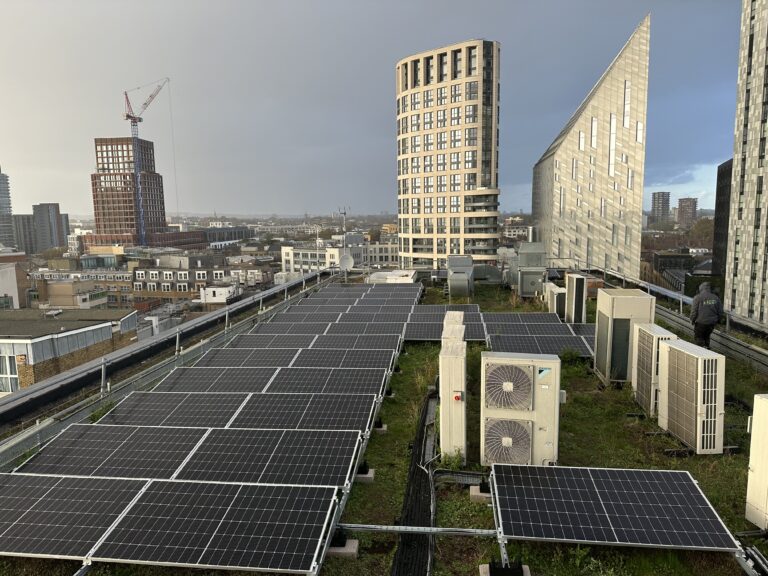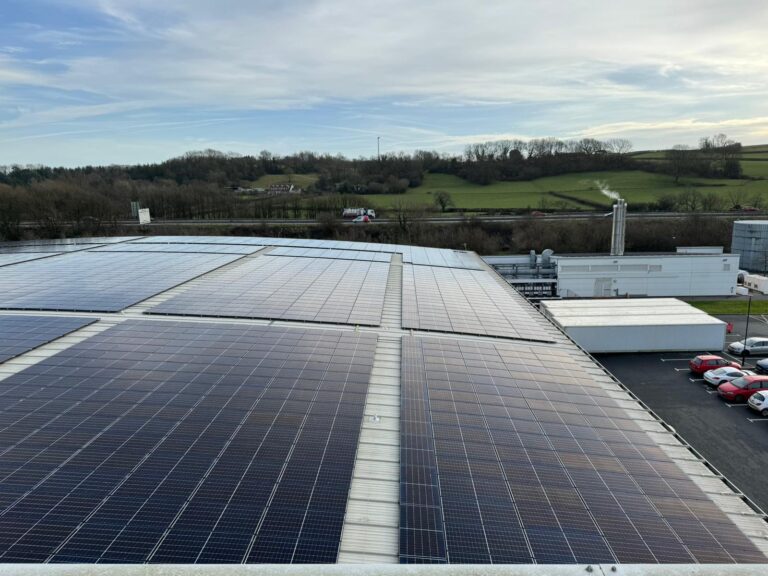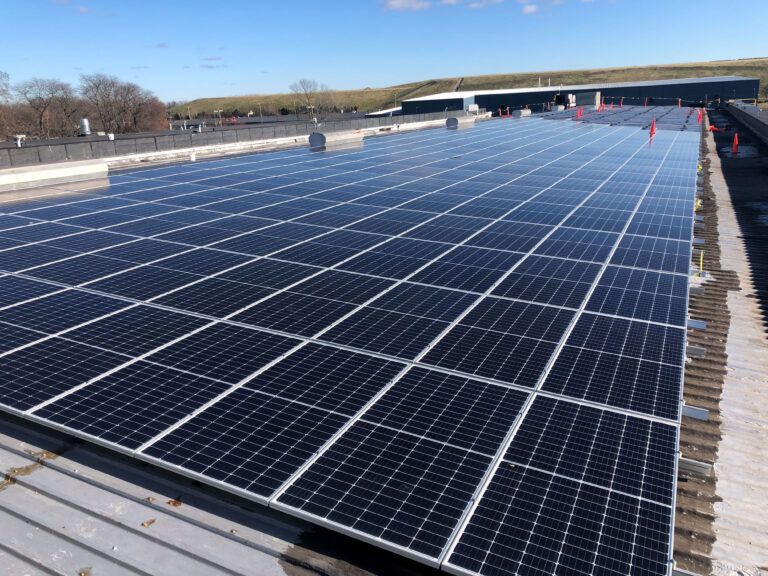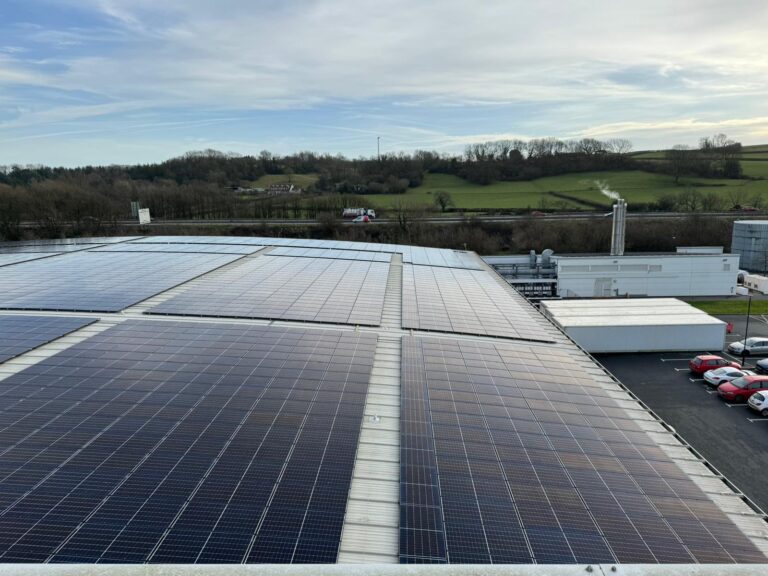Commercial Solar PV Systems: Powering Sustainable Growth in Energy-Hungry Sectors
In an era where energy costs are soaring and sustainability expectations are higher than ever; commercial solar PV systems offer a timely and impactful solution for businesses.
From cutting operational expenses to reducing carbon footprints, the advantages of solar PV panels are increasingly resonating across sectors, especially in high-consumption industries like pharmaceuticals, distribution, engineering, and agricultural storage.
This article explores the benefits and challenges of adopting commercial PV solar panels on business premises, including key considerations like the DNO application process and the role of professional PV installers.

What Are Commercial Solar PV Systems?
Commercial PV systems are scalable installations that capture solar energy via photovoltaic panels, converting it into electricity for on-site consumption or export to the national grid. These systems can be roof-mounted or installed on available ground space and are typically tailored to match a business’s unique energy profile.
Key Benefits of Installing Commercial Solar PV Systems
Reduced Electricity Costs
One of the most compelling reasons businesses invest in commercial solar PV systems is the significant and long-term reduction in energy bills. By generating clean electricity on-site, companies reduce reliance on the national grid, avoid volatile tariff increases, and gain greater control over operational expenses, a crucial advantage for energy-intensive sectors such as manufacturing, cold storage, and pharmaceutical facilities.
Revenue from Excess Energy
When your commercial solar PV system generates more electricity than your business consumes, there are two smart ways to maximise its value. First, the surplus energy can be stored on-site using a Battery Energy Storage System (BESS). This stored energy can then be used during periods of low solar generation, such as at night or during overcast conditions, helping your business maintain a steady and reliable power supply while further reducing reliance on the grid.
Alternatively, excess electricity can be exported back to the national grid through a Smart Export Guarantee (SEG) tariff agreement. Under SEG, your business receives payments for the energy it contributes to the grid, creating an additional revenue stream. In this way, your solar PV panels are transformed from a cost-saving solution into a dynamic, income-generating asset, enhancing both the financial and operational efficiency of your commercial energy strategy.
Lower Environmental Impact
Sustainability is no longer a choice it’s a business imperative. With mounting expectations from regulators, investors, customers, and supply chain partners, businesses are under pressure to reduce environmental impact. Installing commercial PV solar panels helps lower carbon emissions, supports compliance with green standards, and positions the company as a responsible, forward-thinking leader in environmental stewardship and corporate sustainability.
Long-Term Investment
Most commercial solar PV systems pay for themselves within 3 to 7 years, offering decades of consistent financial and environmental benefits. With minimal regular maintenance, recommended bi-annually unless otherwise required, high-quality solar PV panels can operate efficiently for 25 years or more. This longevity makes them a wise, future-proof capital investment, helping businesses lower costs, reduce emissions, and strengthen sustainability credentials over the long term.
Improved Energy Security
With commercial PV generation, businesses gain greater energy independence, reducing reliance on external suppliers and the volatility of global energy markets. This self-sufficiency is especially vital in manufacturing, where stable and uninterrupted power is critical for maintaining production schedules, ensuring quality control, and avoiding costly downtime, ultimately enhancing operational resilience and long-term energy security in an unpredictable energy landscape.

Challenges to Consider: The DNO Application Process
One often overlooked but critical step in deploying commercial solar PV systems is the DNO (Distribution Network Operator) application. Before connecting your system to the grid, approval is required to ensure local infrastructure can handle the additional electricity.
Common DNO Hurdles:
Grid Capacity Constraints:
In areas with limited grid headroom, even a well-designed system may be restricted or denied export capacity.
Extended Approval Times:
DNO reviews can take several weeks to months, delaying project timelines.
Technical Upgrades:
Sometimes, the DNO may require costly infrastructure upgrades as a condition for approval.
Working with experienced PV installers who understand the DNO process is essential. Excel Energy will handle the application, liaise with the network operator, and design systems that optimise on-site consumption to minimise reliance on the grid.

Installation: From Planning to Performance
Successfully installing a commercial solar PV system involves a structured, multi-phase process that ensures your system is safe, efficient, and tailored to your business needs. Each stage is crucial to maximising performance and long-term value.
1. Site Assessment
The process begins with a comprehensive site assessment carried out by expert PV installers. This includes analysing your business’s historical and projected energy consumption, inspecting available roof or ground space, assessing shading and sun exposure, and evaluating the structural integrity of mounting surfaces. This step is essential for determining the viability and potential size of your solar PV installation.
2. System Design
Based on the findings from the site assessment, engineers and designers develop a bespoke solar solution. This includes selecting the most suitable solar PV panels, inverters, and mounting structures tailored to your energy profile and environmental conditions. The design considers factors such as orientation, tilt, weather resilience, and available space to optimise energy generation and return on investment.
3. DNO Application & Permitting
Before any installation can proceed, your system must be approved by the Distribution Network Operator (DNO) to ensure grid compatibility and capacity. Excel Energy will manage this often-complex application process, addressing any potential export limitations or grid upgrade requirements. In parallel, we will handle all planning permissions, building control notifications, and other compliance documentation to ensure your system adheres to national and local regulations.
4. Installation & Commissioning
Once approvals are secured, the physical installation begins. The solar PV panels and associated hardware are professionally installed by our certified technicians, ensuring minimal disruption to your operations. After installation, the system undergoes rigorous testing and commissioning to verify that it meets all safety, electrical, and performance standards. At this stage, it’s connected to your building’s power system and, if applicable to the national grid.
5. Ongoing Monitoring & Maintenance
Post-installation, your commercial solar PV system is supported by advanced monitoring tools that track energy production, efficiency, and potential faults in real time. Scheduled preventative maintenance and routine inspections ensure your system remains in peak condition, helping to extend lifespan, avoid downtime, and maximise your return on investment. Many providers also offer performance guarantees and support packages for added peace of mind.

Real-World Impact: Energy-Hungry Industry Use Cases
Distribution & Fulfilment Centres
With conveyor belts, lighting, and climate control systems in constant use, warehouses benefit immensely from commercial PV. These systems reduce grid dependence during peak hours, cutting both costs and emissions.
Engineering and Fabrication Facilities
Precision machining, welding, and manufacturing equipment draw large amounts of power daily. Solar photovoltaic installations not only reduce ongoing energy costs but also contribute to more sustainable, ISO-certified operations.
Farming & Agricultural Storage
Modern farms require reliable electricity for refrigeration, irrigation, grain dryers, and climate-controlled storage. With vast roof space on barns and storage units, solar panels can dramatically reduce electricity spend and preserve margins in a sector highly sensitive to input costs.
E-Commerce Fulfilment Centres
High throughput operations require dependable energy sources. By installing commercial PV solar panels, businesses can stabilise energy supply, reduce operating costs, and meet green logistics expectations.
Commercial solar PV systems are no longer a futuristic investment; they are a present-day necessity for forward-thinking businesses. From energy cost reduction to reputational gain, the benefits are clear. However, to fully capitalise on solar energy, businesses must navigate installation challenges, particularly the DNO application process, with the guidance of experienced PV installers.
For manufacturers, logistics providers, engineers, and agribusinesses, adopting commercial PV is not just about saving money, it’s about building a sustainable, secure, and resilient future.
